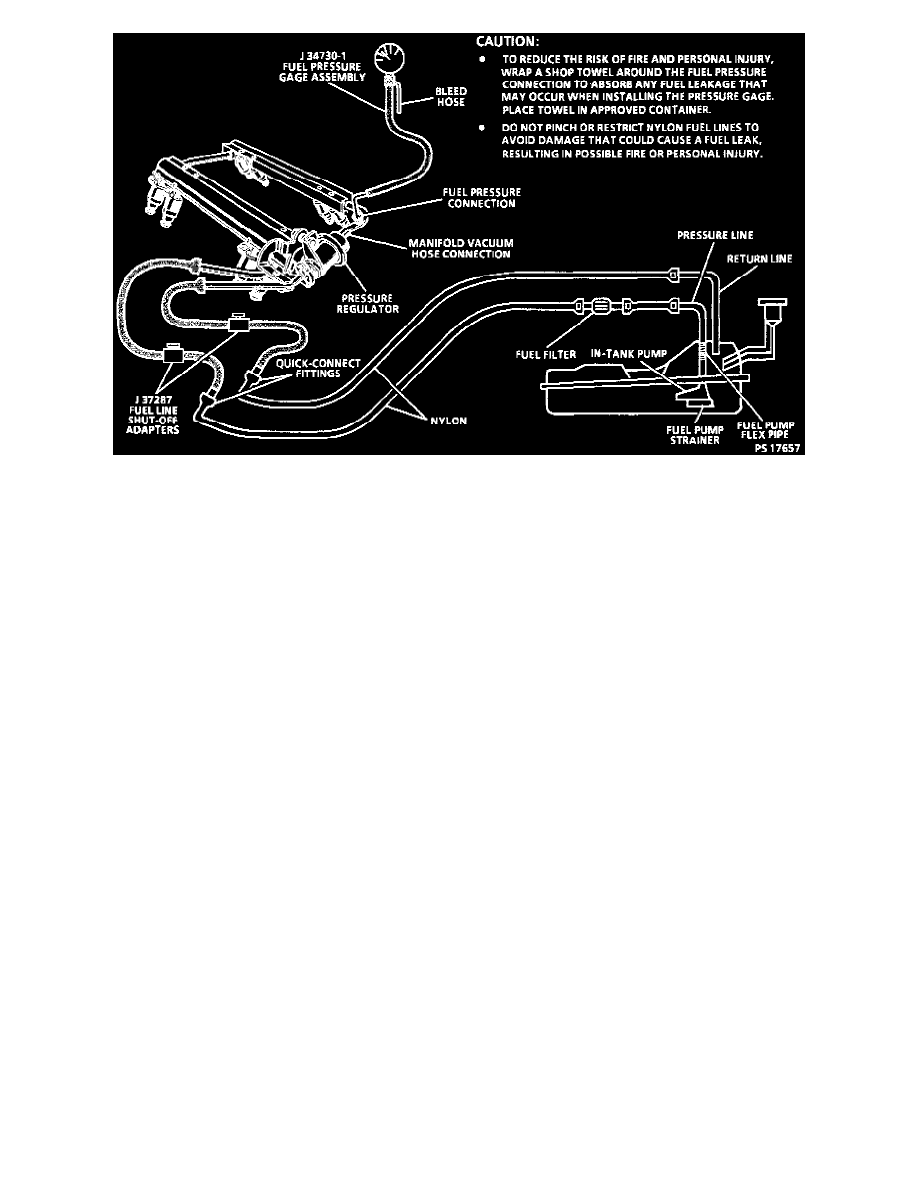Caprice Wagon V8-350 5.7L (1994)

Fuel Pressure Gauge Hookup And System Schematic
CIRCUIT DESCRIPTION
When the ignition switch is turned "ON," the Powertrain Control Module (PCM) will turn "ON" the in-tank fuel pump. It will remain "ON" as
long as the engine is cranking or running, and the PCM is receiving reference pulses. If there are no reference pulses, the PCM will shut "OFF" the
fuel pump within 2 seconds after ignition "ON" or engine stops.
Inside the fuel tank an electric fuel pump (within an integral reservoir), supplies fuel through an in-line filter to the fuel rail assembly. The pump is
designed to provide fuel at a pressure above the regulated pressure needed by the injectors. A pressure regulator, attached to the fuel rail, keeps
fuel available to the injectors at a regulated pressure. Unused fuel is returned to the fuel tank by a separate line.
CHART TEST DESCRIPTION
Number(s) below refer to circled number(s) on the diagnostic chart.
1. Connect fuel pressure gage as shown in illustration. Wrap a shop towel around the fuel pressure connection to absorb any small amount of fuel
leakage that may occur when installing the gage. With ignition "ON" and fuel pump running, pressure should be 284-325 kPa (41-47 psi). This
pressure is controlled by spring pressure within the regulator assembly.
2. When the engine is idling, manifold pressure is low (high vacuum) and is applied to the pressure regulator diaphragm. Vacuum will offset spring
pressure and result in lower fuel pressure. Fuel pressure at idle will vary somewhat depending on barometric pressure but, should be less than
pressure noted in Step (1).
3. A system that does not hold pressure is caused by one of the following:
^
Leaking fuel pump check ball.
^
Leaking fuel pump flex pipe.
^
Leaking valve/seat within pressure regulator.
^
Leaking injector(s).
4. A leaking injector can best be determined by checking for a fouled or saturated spark plug(s). If a leaking injector can not be determined by a
fouled or saturated spark plug, the following procedure should be used.
^
Remove fuel rail but leave fuel lines connected.
^
Lift fuel rail out just enough to leave injector nozzles in the ports.
CAUTION: To reduce the risk of fire and personal injury that may result from fuel spray on the engine, make sure fuel rail is positioned
over injector ports and injector retaining clips are intact.
^
Pressurize the fuel system and observe injector nozzles.
5. Fuel pressure that drops off during acceleration, cruise or hard cornering may cause a lean condition and result in a loss of power, surging or
misfire. This condition can be diagnosed using a Tech 1 (or equivalent) scan tool. If the fuel system is very lean, one or both oxygen sensors will
